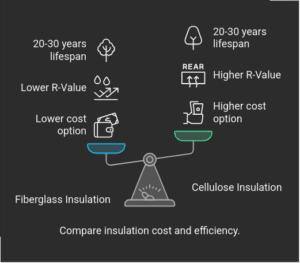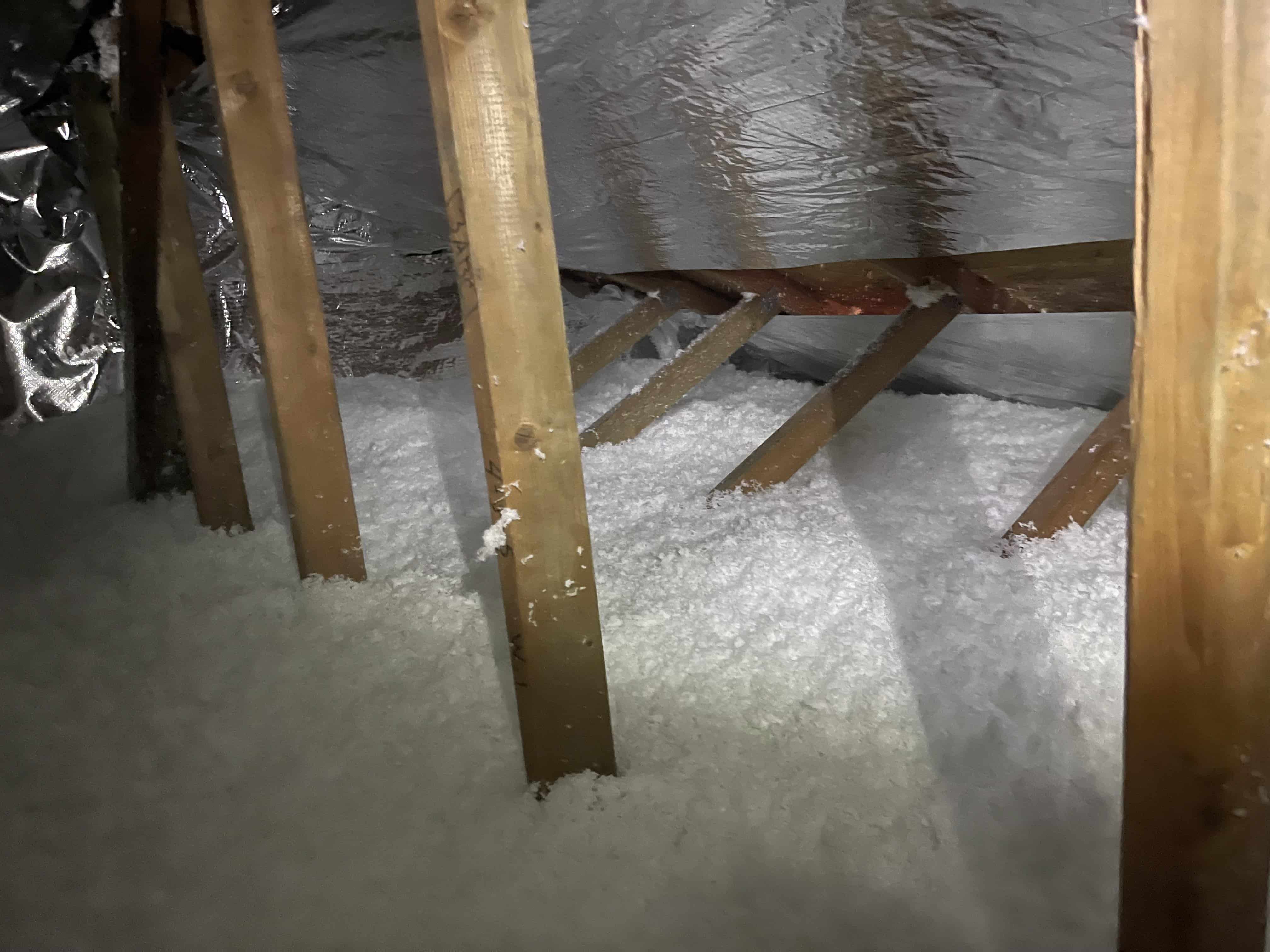Do you want to maintain a comfortable temperature of your interior throughout the seasons at an affordable price? Blow-in insulation from the My Insulation Guy can help you do that. In winter, it traps the heat inside and keeps the temperature warm. In summer, it keeps the temperature cool. As demand peaks, its cost also fluctuates significantly. But what’s the projected cost for 2025?
Here is a comprehensive analysis of the blown-in insulation cost during the following year.
Prediction for the Cost of Blown-In Insulation in 2025
Did you know that blown-in insulation costs vary based on materials, labor, and location? Industry insight shows that, on average, homeowners are willing to spend anywhere between $1000 and $3000 for installation services. Blown-in insulation costs, alongside inflation and increased material prices, suggest that in 2025, they will increase by an additional 10 percent.
What Is Blown-In Insulation?
Do you want to keep your home warm and comfortable while cutting down on energy costs? Blown-in insulation may just be your perfect answer. It is one of the most valuable techniques for preventing heat loss and maintaining internal temperature.
This type of insulation consists of small pieces of fiber, foam, or other materials. It is applied using specialized equipment that blasts it into cavities, attics, and walls that need filling. This method helps prevent gaps, ensures complete coverage, conserves energy, eliminates chilly drafts, and tremendously improves efficiency.
Blown-In Insulation Types
Fiberglass: This type of insulation is probably the most cost effective as well as the easiest to obtain. However, it tends to droop with time.
Cellulose: Made from repurposed paper, cellulose is safe for the environment, protects well, and does not cause harm.
Mineral Wool: Great for blocking sound and is highly resistant to fire.
Elements that Impact the Cost of Blown-In Insulation
The total cost is influenced by the following:
Insulation Type: The cost varies depending on whether the insulation is made of fiberglass, cellulose, or mineral wool.
Home Size: More area entails more materials and time for work.
Labor Costs: Additional expenses come with hiring professional blown insulation contractors.
Location: The cost of services differs depending on geographical location.
Depth of Insulation: Greater depth equates to increased costs.
Tax Credits: Certain states provide tax incentives for using efficient energy insulating systems.
Comparing the Insulation Material and Cost

Hiring a blown insulation Contractor
While looking for insulation installers near me, pay attention to the following:
Experience & Reviews: Read the reviews and see the past work done by the customer.
Certifications & Insurance: Verify that they are licensed and can provide proof of insurance.
No Charge Estimates: Having more than one quote is good, so strive to receive several offers.
Expertise Knowledge with Insulation: A few contractors specialise in particular types of insulation.
Warranties: Seek out those that are likely to deliver universal contracts.
Do It Yourself (DIY) Vs Hiring Professionals
DIY Installation
Advantages:
- Saves money
- Best for minor tasks
- Materials can be found easily
Disadvantages:
- May require certain tools
- May not install it correctly
- No guarantee the work will be done properly
Professional Installation
Advantages:
- Warranties and guarantees are included
- Saves effort and time
- Handling proficiency, efficiency, and coverage are ensured
Disadvantages:
- Requires payment for labor, thus a higher cost
- May require scheduling
Is Blown-In Attic Insulation Worth the Investment?
Definitely! Proper attic insulation has the potential to reduce energy costs by as much as 20%. Selecting the best blown-in attic insulation ensures comfort and efficiency throughout the year. Moreover, well-insulated properties have an increased resale value, improved indoor air quality, and better ventilation.
Energy Savings
Immediate Savings: A homeowner will likely save about $200 to $600 per year on heating and cooling expenses.
Return on Investment: Most homeowners break even on their investment within 3 to 5 years due to savings on energy costs.
Environmental Impact: The reduction of energy waste contributes to a lower overall carbon footprint.
Conclusion
Always hire a licensed insulation contractor when considering blown-in insulation. It is essential to explore all options, take multiple estimates, and see what is most suitable for your home. My Insulation Guy offers the best blown-in insulation in Riverside County, San Bernardino County, Orange County, and San Diego. For more information, check out our website and start your journey towards reducing energy expenses.
FAQ
- What is the durability of blown-in Insulation?
Chronologically, blown-in insulation lasts anywhere between 20/30 years depending on the material utilised, while mineral wool can last up to 50 years.
- Can I install blown-in insulation myself?
While undertaking it yourself is doable, it is wiser to hire contractors who specialise in blown insulation to ensure proper coverage and efficiency and to mitigate future heat loss.
- How much attic insulation do I need?
While the R-value may differ across regions, most areas set their standard between R-30 and R-60. Remember to check your local building codes for other details that may be required as well.
- Is blown-in insulation better than batt insulation?
With all the airspace experiences reduced, blown-in provides exceptional energy efficiency and outdoes batt insulation in coverage and gapped airspaces.
- Will blown-in insulation reduce noise?
Without a doubt, the insulation dampens sound between walls and floors, adding to the quietness of your home and making it a comfortable living area.

